7/15/19 – Luckily for me, I was able to put my newfound forensic entomology knowledge to the test in an actual crime scene!
Uhh…sort of.
Cristina put together four pretend crime scenes so that I could get a small taste of what forensic entomologists do on the scene of a crime. I was given a “case file” for each “victim” and a few “flies” to identify. There were a lot of factors that went into the size of the flies, like the species, the temperature, if there was direct sunlight or not, and if the victim had used drugs before their death. What I concluded was that forensic entomologist’s have an incredibly tedious job that requires patience and a lot, and I mean a lot, of time to spare.
I only really have one of those things. You can guess which.
This was just a mock crime scene, which was extremely simplified and didn’t have the pressure of detectives and officers waiting for an answer. Which means the other part of the job, classifying insects using a dichotomous key, can’t be too bad, right?
WRONG
Staring at a beetle for 2 hours under a microscope that kept going in and out of focus with every breath you take and flipping through a giant book in a choose-your-own adventure way really makes you appreciate the little things in life. Like the internet. And good lighting.
The dichotomous key was the most tedious part; I had to restart at step one over three times because I didn’t know which option stirred me in the wrong direction. To give you a sense of what a true dichotomous key asks of you, one of the questions was essentially asking me to compare the middle foot to the back foot, and count the little knobs on each one to see if they were the same. Because you see, this could mean the difference between a maggot eating carrion North American beetle and a water beetle that lives in the Amazon rainforest.
I’m not joking
I ended up at the right destination eventually (with bug-expert Ben’s help) and concluded that the black, unassuming beetle was part of the family of beetles known as Silphidae. I still didn’t know what species, but hey, at least I was in the general realm of my buggy friend. And let me tell you, I’ve never felt more accomplished in my entire life.
I was also able to dabble in other aspects of forensics, like finger print collection. I was only able to collect a few fingerprints using corn starch as, well, real-life forensic scientists use more sophisticated substances rather than a common cooking ingredient. For a couple of examples, forensic scientists use magnetic shavings (used on shiny surfaces like tile and plastic baggies), fluorescent powder (used on multi-colored or dark surfaces) the chemical ninhydrin (bonds with amino acids left on the finger print to make it blue or purple, used on paper or cardboard surfaces), and the cyanoacrylate fuming method, which is used for just about everything else
So, as you can probably guess, we didn’t have any of those in the HQ kitchen.
First, I needed fingerprints to compare it to:
Mine
Cristina’s and Suzanne’s
Fun Fact: there are three types of fingerprint patterns that someone can have, called “arch,” “loop,” and “whorl.” Loop patterns are the most common with two variants (ulnar and radial), with 60% of the population having them. Whorls have four variants (plain, central, double loop, and accidental) which affect 35%, and the arch variants (plain and tented) at the rarest with only 5% of the population having it. Each finger can have a different one, but that’s very uncommon. My finger prints had mostly radial loops with my right middle finger having an accidental whorl. Suzanne had central whorls on both of her thumbs and her left ring finger, and Cristina can mostly loops but had a tented arch on her left pinkie finger and her right middle finger. Crazy how she’s part of the 5%!
I was actually also able to set up a cyanoacrylate experiment with a glass bottle and some krazy glue (krazy glue has the same properties as cyanoacrylate) which, admittedly, only yielded a partial print, but it was still very interesting nonetheless.
Tomorrow I am heading to UOFA with Cristina and Suzanne in order to get the species on my pinned beetles and flies, as well as to basically get a free look at the college. I can’t wait!!!!!!

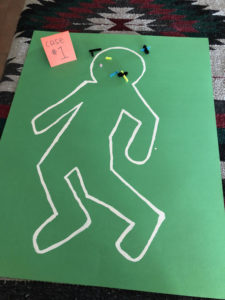
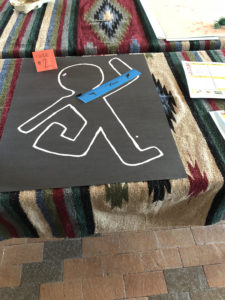
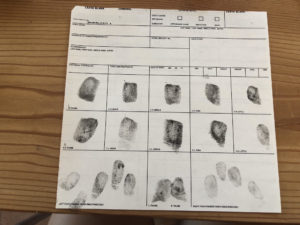
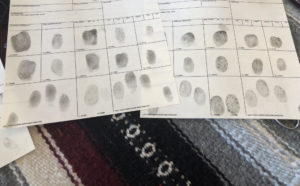
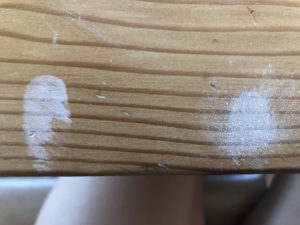
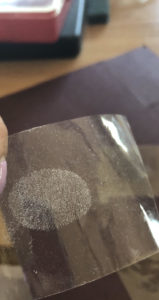
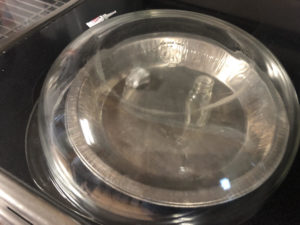
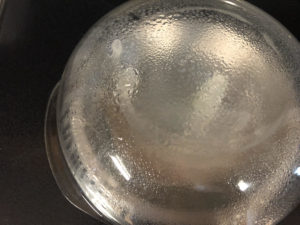
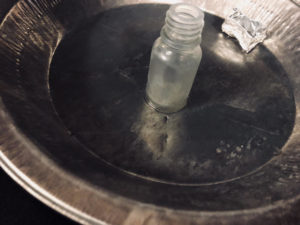
WOW, Forensics is Complicated, for sure!!!
You will never look at a dead animal in the same light as before…..
Great Job!!!
Mercy–these posts are great! Awesome job out there. Was wonderful meeting and living at the ranch with you. Best of luck in the future!